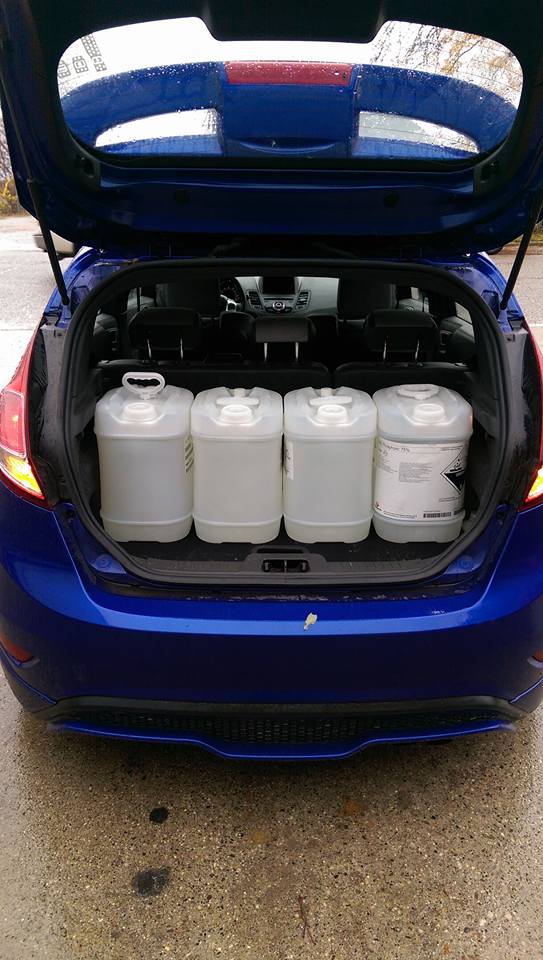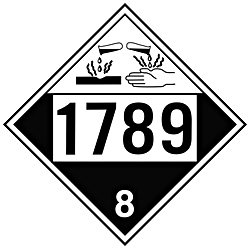 "themanwithsauce - has as many vehicles as job titles" (themanwithsauce)
"themanwithsauce - has as many vehicles as job titles" (themanwithsauce)
12/03/2016 at 04:31 ē Filed to: None
 4
4
 10
10
 "themanwithsauce - has as many vehicles as job titles" (themanwithsauce)
"themanwithsauce - has as many vehicles as job titles" (themanwithsauce)
12/03/2016 at 04:31 ē Filed to: None |  4 4
|  10 10 |

Throwback to the time I carried 20 gallons of phosphoric acid in the back of my Fiesta ST. In the words of our traffic department ďThatís gotta be the fastest delivery vehicle weíve ever loaded upĒ. ANd the 4x 5 gallon containers fit so snugly and perfectly.....it seemed intentional. Love this car.
 Echo51
> themanwithsauce - has as many vehicles as job titles
Echo51
> themanwithsauce - has as many vehicles as job titles
12/03/2016 at 06:00 |
|
No exhaust tip? Or is the angle just enough to hide it behind the diffuser/lip?
 E90M3
> themanwithsauce - has as many vehicles as job titles
E90M3
> themanwithsauce - has as many vehicles as job titles
12/03/2016 at 09:44 |
|
I wonder if thatís enough material to warrant a hazmat endorsement and/or a placard. †
 Svend
> E90M3
Svend
> E90M3
12/03/2016 at 12:24 |
|
In the U.K. you should really have one for just the one container.
 E90M3
> Svend
E90M3
> Svend
12/03/2016 at 12:44 |
|
I think in the US you only have to have a placard if itís in bulk, which I believe is any container with a volume greater 119 gallons.
 Svend
> E90M3
Svend
> E90M3
12/03/2016 at 13:00 |
|
We have U.K. and E.U. laws in the U.K.
E.U. law says that a sign be on display but not necessarily what it is,
where U.K. law says a sign be on display and if itís hazardous a code for what it is be below it so the fire service are aware what it is should something happen.
We would even put a gases diamond on the car if we needed to urgently replenish our D size oxygen and/or entonox cylinders, even if it was just the one cylinder.
 E90M3
> Svend
E90M3
> Svend
12/03/2016 at 14:20 |
|
In the US we have the hazard triangle with the hazard group number and the UN number for the chemical (i.e. HCl > 10% is 1789). Like this:

Not sure what the rules are for non bulk chems, I dealt with bulk oil fields in my last job.
 Svend
> E90M3
Svend
> E90M3
12/03/2016 at 14:37 |
|
Some of ours are quite similar.
I canít post pictures but hereís some from a signage company for an idea.
!!!error: Indecipherable SUB-paragraph formatting!!!
http://www.uksafetysigns.co.uk/hazchem_signs.asp
 Svend
> E90M3
Svend
> E90M3
12/03/2016 at 14:49 |
|
Found the actual listings.
!!!error: Indecipherable SUB-paragraph formatting!!!
http://the-ncec.com/free-online-hazmat-hazchem-guide/
 E90M3
> Svend
E90M3
> Svend
12/03/2016 at 15:01 |
|
Looks like you guys have more info on yours.
 Svend
> E90M3
Svend
> E90M3
12/03/2016 at 15:13 |
|
Yeí, itís essentially what the product is, how to deal with the immediate risk, who to phone about how to handle and remove the risk and who is shipping the product.
The more information the emergency services can get the faster they can respond to it. Such as rather than a fire, ambulance or police service personnel turn up, find out what the product is and then look up how to deal with it. A member of the public calling it in can let all the emergency services who ahead of arrival what they are dealing with and respond accordingly.